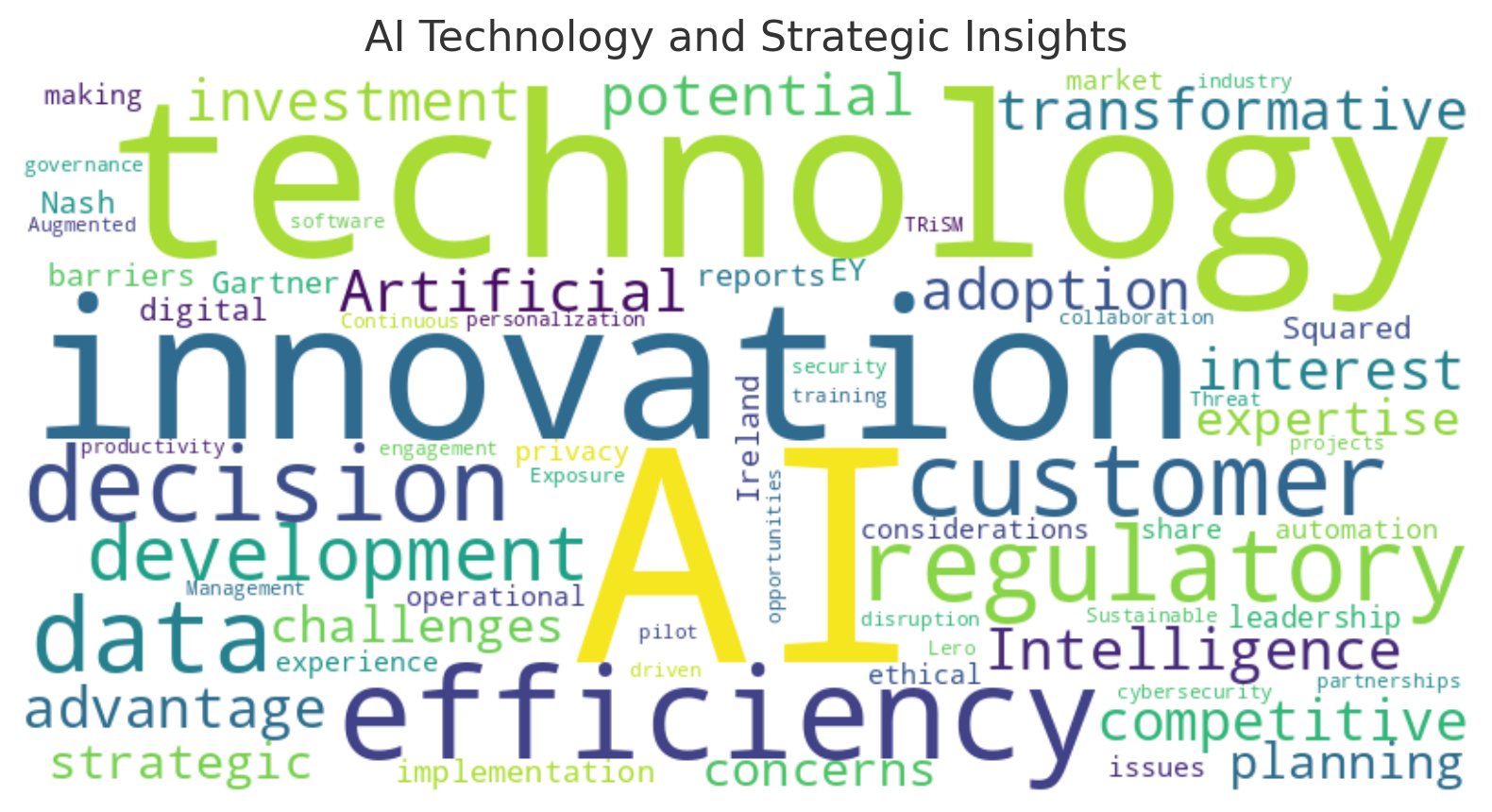Are We Talking the Talk but Not Walking the Walk? The AI Paradox

The AI Paradox: Are We Talking the Talk but Not Walking the Walk?
Artificial Intelligence (AI) has undoubtedly become one of the most talked-about technologies in the past 24 months. Any tech conference and boardrooms are talking about how AI's transformative potential is omnipresent. However, despite the enthusiasm and recognition of its capabilities, there remains a significant gap between interest and actual investment in AI.
This disparity raises the question: Are we merely discussing AI or are we truly harnessing its potential or risk being left behind?
In this article, I will draw insights from three comprehensive reports: the Nash Squared Digital Leadership Report, the EY Ireland Tech Leaders Outlook Survey and the Gartner 2024 Strategic Technology Trends Report.
By examining the findings from these sources, we can better understand the barriers to AI adoption and explore strategies to bridge the gap between AI interest and investment
The Current Landscape of AI Adoption
Nash Squared Insights:
According to the Nash Squared Digital Leadership Report, there is a noticeable underutilisation of AI technologies. While the potential of AI is widely acknowledged, only a small percentage of organisations have successfully implemented large-scale AI projects.
This suggests that many businesses are still in the exploratory phase, hesitant to fully commit to AI initiatives.
EY's Perspective:
The EY Ireland Tech Leaders Outlook Survey reveals a similar trend. Despite high interest, over 60% of Irish tech leaders have not yet invested in AI technologies or developed AI-related strategies (EY US) (techbuzzireland).
This gap between recognition and action points to underlying barriers that hinder AI adoption.
Gartner's View:
Gartner's 2024 report highlights the strategic importance of AI but also notes the challenges in transitioning from interest to implementation. Trends like AI Trust, Risk and Security Management (AI TRiSM) and AI-Augmented Development are crucial for integrating AI into business operations.
However, Gartner emphasises that achieving these goals requires overcoming significant hurdles, including expertise and regulatory concerns.
Barriers to AI Adoption identified from the reports
- Expertise and Skills Gap:
- A common barrier is the lack of in-house expertise. Both Nash Squared and EY reports highlight significant skill shortages in AI and data science (EY US). Organisations struggle to find and retain talent capable of driving AI projects from concept to execution.
- Regulatory and Ethical Concerns:
- Regulatory issues and ethical considerations also pose substantial challenges. The complexity of navigating AI regulations, coupled with concerns about data privacy and ethical AI use, can deter organisations from making substantial investments.
- Strategic Planning and Investment:
- Effective AI implementation requires strategic planning and substantial investment. Many businesses are cautious about allocating significant resources without a clear, measurable return on investment. This cautious approach leads to a slower adoption rate, as companies prioritise immediate value over long-term potential (EY US).
The Path Forward: Bridging the Gap
To bridge the gap between AI interest and investment, organisations need to adopt a multi-faceted approach:
- Building Expertise:
- Investing in training and development programs to build internal AI capabilities is essential. Partnerships with academic institutions and AI vendors can also help in acquiring the necessary skills and knowledge. For example, collaborating with organisations like Lero - The Science Foundation Ireland Research Centre for Software can provide access to cutting-edge research and expert insights. Lero offers various initiatives and projects that can help organisations enhance their AI capabilities and stay abreast of the latest advancements in the field.
- Addressing Regulatory Concerns:
- Proactively engaging with regulatory bodies and participating in industry forums can help organisations stay ahead of compliance requirements. Developing clear ethical guidelines and frameworks for AI use will also build trust and facilitate smoother implementation.
- Strategic Investments and Pilot Projects:
- Starting with pilot projects that demonstrate clear value can help build a business case for larger investments. These initial projects can provide valuable insights and help refine AI strategies, making it easier to scale AI initiatives across the organisation (EY US).
- Emphasising AI Governance:
- Implementing robust AI governance frameworks, such as AI TRiSM, can ensure that AI systems are trustworthy, fair and secure. This not only mitigates risks but also enhances the overall effectiveness of AI deployments.
The reluctance to invest in AI can have far-reaching consequences for businesses. From losing competitive advantage and operational inefficiencies to missing out on innovation and increased cybersecurity risks, the potential downsides are significant. CEOs must recognise the transformative power of AI and take proactive steps to integrate it into their business strategies. Embracing AI not only drives growth and innovation but also ensures that companies remain competitive and resilient in an increasingly digital world.
The enthusiasm for AI is undeniable, but turning that interest into action remains a challenge. As highlighted by the Nash Squared, EY and Gartner reports, overcoming barriers such as expertise, regulatory concerns and strategic planning is crucial for fully leveraging AI’s potential. Collaborating with partners like Lero can provide valuable resources and expertise to help bridge this gap. Organisations that fail to act may find themselves left behind as AI continues to evolve and reshape industries. It’s time to move beyond the hype and start making tangible investments in AI to secure a competitive edge in the digital era.
By examining insights from the Nash Squared, EY and Gartner reports, it is evident that overcoming barriers such as expertise, regulatory concerns and strategic planning is crucial for fully leveraging AI’s potential. Ignoring AI is not an option for forward-thinking leaders who aim to secure a sustainable and prosperous future for their organisations.
